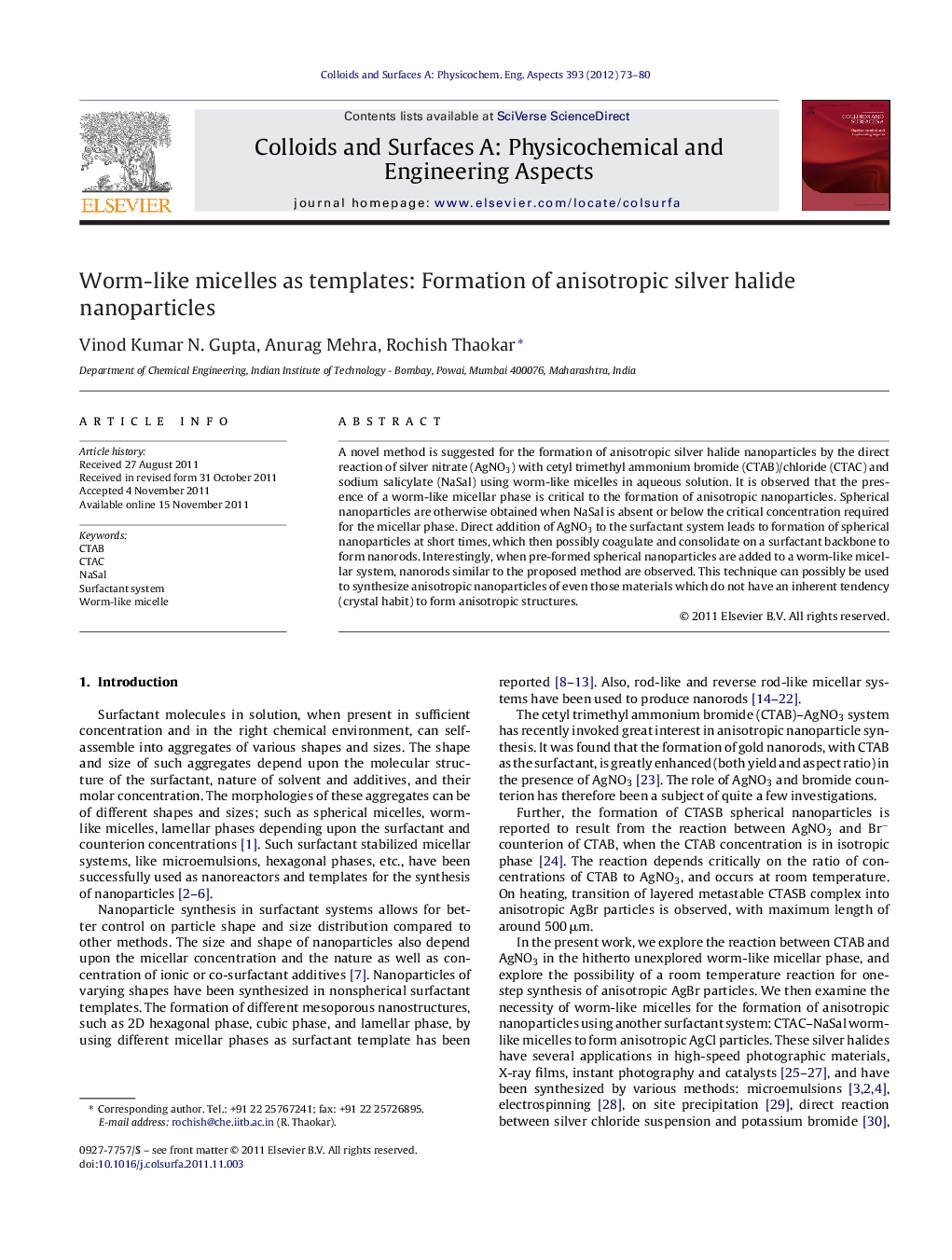| Article ID | Journal | Published Year | Pages | File Type |
|---|---|---|---|---|
| 594343 | Colloids and Surfaces A: Physicochemical and Engineering Aspects | 2012 | 8 Pages |
A novel method is suggested for the formation of anisotropic silver halide nanoparticles by the direct reaction of silver nitrate (AgNO3) with cetyl trimethyl ammonium bromide (CTAB)/chloride (CTAC) and sodium salicylate (NaSal) using worm-like micelles in aqueous solution. It is observed that the presence of a worm-like micellar phase is critical to the formation of anisotropic nanoparticles. Spherical nanoparticles are otherwise obtained when NaSal is absent or below the critical concentration required for the micellar phase. Direct addition of AgNO3 to the surfactant system leads to formation of spherical nanoparticles at short times, which then possibly coagulate and consolidate on a surfactant backbone to form nanorods. Interestingly, when pre-formed spherical nanoparticles are added to a worm-like micellar system, nanorods similar to the proposed method are observed. This technique can possibly be used to synthesize anisotropic nanoparticles of even those materials which do not have an inherent tendency (crystal habit) to form anisotropic structures.
Graphical abstractNanorod formation from spherical AgBr nanoparticles in worm-like micellar system. Figure optionsDownload full-size imageDownload as PowerPoint slideHighlights► A novel and facile method for synthesis of anisotropic silver halide nanoparticles. ► Worm-like micellar phase provides template for anisotropic particle formation. ► Only spherical particles formation in absence of worm-like micelles. ► This technique can possibly be used to synthesize other anisotropic nanoparticles.
